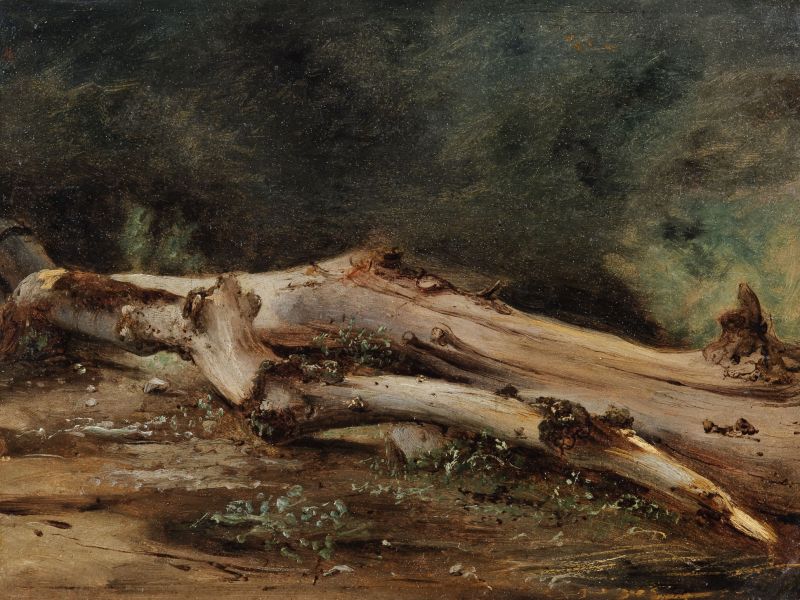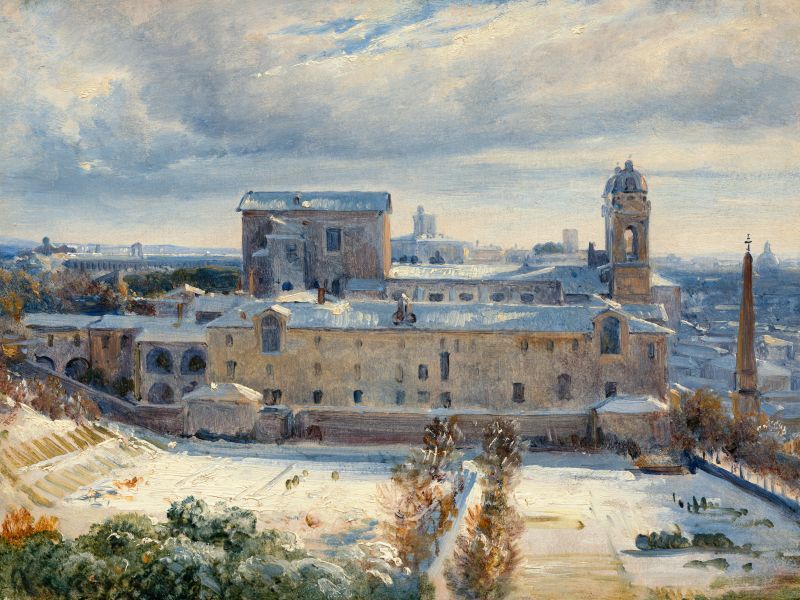Anton Sminck Pitloo Study of a Fallen Dead Tree

On first observation, this painting is quite sombre, stark and honest. The carcass of a fallen tree, the bark long sloughed off, and the wood bleached, cracked and probably patterned with a calligraphy from beetle larvae and fungal strands. Such fallen trees are a vital part of the physiology of a forest. While declining but still a living tree, they support a huge range of mosses, lichens, and beetles, the crevices host roosting bats, and the woodpeckers excavate nesting cavities. Once they fall the carcass eases back into the soil, riddled by fungi that transform dead dry wood back into life.
European forests are, in part, defined by the dead, both as markers of an ancient process of renewal and as victims of pollution and disease. As a child I remember the carcasses of elm killed by Dutch elm disease. Now the pattern is being repeated with ash dieback, oak decline and oak sudden death. The first signs of climate change in Europe – drought, storm and fire – will scythe and reshuffle Europe’s forests. The forests where Pitloo painted have changed and will continue to change as the dynamics of conservation and restoration interact with climate change, pollution and tree disease.
Mike Maunder
Sign up to our emails
Be the first to hear about our news, exhibitions, events and more…


